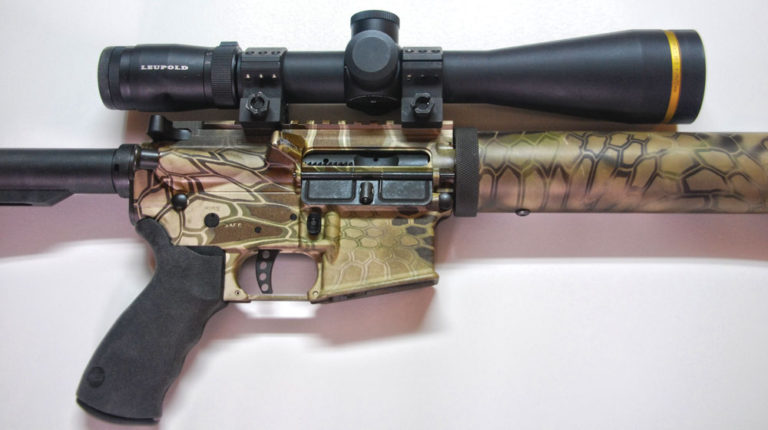

Accuracy-minded shooters take notice—the Alexander Arms 6.5 Grendel Hunter means business.
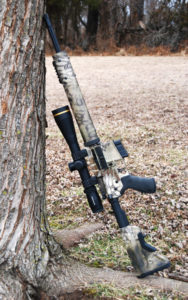 The 6.5 Grendel is one of the more purposefully designed accuracy cartridges to ever come down the pike. So when an equally unique rifle for it comes along, accuracy-minded shooters sit up and take notice. The “Grendel Hunter” from Alexander Arms is an AR with attitude and the results to back it up.
The 6.5 Grendel is one of the more purposefully designed accuracy cartridges to ever come down the pike. So when an equally unique rifle for it comes along, accuracy-minded shooters sit up and take notice. The “Grendel Hunter” from Alexander Arms is an AR with attitude and the results to back it up.
The 6.5 Grendel cartridge itself is equally impressive. Its goals were simple yet heretofore elusive in all but a few contemporary rounds, i.e., the .22 and 6PPC and similar wildcats. In fact, the 6.5 Grendel can trace its lineage to some of these outstanding cartridges. It was designed from the ground up to provide the optimum combination of power, efficiency and accuracy in America’s “modern sporting rifle” – the AR-15. To this end, it has succeeded remarkably.
While the Grendel has been used successfully for hunting a large variety of medium-sized big game and varmints, there was no specific hunting model until now, with the release of the Grendel Hunter model from Alexander Arms. The company is headed up by the inimitable Bill Alexander, and is located at the U.S. Army Arsenal in Radford, Va. Bill Alexander is a multitalented engineer who had worked for the British Ministry of Defense.
I caught up with him at a recent industry gig, and talked with him at length about the trials and tribulations that led to the 6.5mm Grendel Hunter. I love talking to Bill because you can’t help but learn a bunch of neat, new information. Bill is one of those people who’s so smart it’s scary. As he expounds on firearm design, ballistics and especially the 6.5 Grendel, you can almost hear the wheels whirling in his head at 100 miles an hour, and his enthusiasm and passion are infectious.
When the Cold War ended, Bill said he “turned his attention to ARs. They are great rifles.” But he added that he wanted to “make the AR a little more versatile.” He saw the need for a flat-shooting, hard-hitting cartridge that would broaden the horizon of the AR rifle, and the Grendel was the result. Bill told me, “I designed the 6.5 Grendel specifically as a hunting cartridge.”
Alexander Arms ARs have always been made with the care and precision that result in high-quality guns. There isn’t much really all that new in the Grendel Hunter except for the finish and, of course, the 6.5 Grendel chambering. Alexander Arms has offered various versions of its ARs chambered for the Grendel since its introduction at the 2004 SHOT Show, and this is the latest iteration.
The fluted 18-inch, stainless steel barrel is matte black, and has six grooves with a right-hand twist of one turn in 8 inches – steep enough for the heaviest bullets that can realistically be launched out of the modest-sized Grendel case. Although the rifle does not come equipped with a muzzle brake or flash hider, the muzzle has 9⁄16-24 threads so that accessories can be added, if desired, and a thread protector comes as standard.
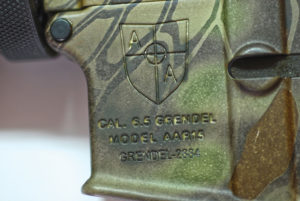
The handle is a comfortable Ergo Grip, and the collapsible B5 stock allows length-of-pull adjustment from 12½ to 14½ inches, handy when shooting from awkward positions, in heavy winter clothing or at steep angles from a coyote set.
The single-stage trigger is Alexander Arm’s Tactical style with skeletonized hammer and disconnector. Pull weight on my test rifle was 5 pounds, 6 ounces. Alexander Arms says it’s “glass rod” crisp, and they aren’t kidding. The flattop receiver is festooned with plenty of M-1913 Picatinny rail slots for the attachment of optics or a rear sight. Provision for a front sight is a MK10 Plus rail section atop the 12½-inch cylindrical, free-floated handguard, and three additional attachment points are spaced around the front of the handguard at 90-degree intervals.
Without sights, the new model weighs in at a comfortable 6 pounds, 9 ounces; with the addition of a relatively lightweight scope, it would easily come in at under 8 pounds. The fat, 34mm Leupold VX-6 4-24x52mm scope I used for testing brought the weight to a little under 9 pounds. Admittedly, this superlative scope was a bit of overkill, but it is certainly high on the “wow” factor.
Probably the coolest feature of this new AR is the finish. It is a camo pattern called Kryptek Highlander, and is very attractive and would look right at home in the field.
For my money, though, the pièce de résistance of this outfit is the 6.5 Grendel cartridge itself. This was no haphazard development, and its circuitous history illustrates the amount of thought and experimentation that went into its design. It took many years, but the result is well worth it. Here’s a brief chronology.
In 1943, the Russian 7.62×39 was developed for their military. Never content, in the late 1950s, the Russians necked down that round to hold a 5.67mm (.223 inch) bullet for deer hunting, and they called it the .220 Russian.
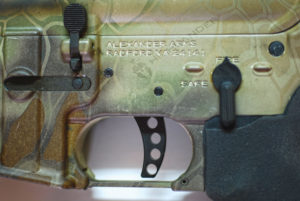
In 1975, Dr. Louis Palmisano and gunsmith Ferris Pendell developed a .22 caliber target round based on the .220 Russian, and called it the .22 PPC (Pendell Palmisano Cartridge). It went on to achieve phenomenal success in the benchrest game.
In 1984, Dr. Palmisano and noted ballistician Bill Davis developed the 6.5 PPC cartridge, also based on the .220 Russian case. This was for use in bolt-action guns by the U.S. Shooting Team in the 1986 World Championships. While the performance of the new round was fine, the team stuck with the 6mm cartridge they were already using at the time.
The 6 PPC, a necked-up version of the .22 PPC, came along in 1988 and has rightfully earned the reputation of “the most accurate cartridge in the world.” Also in 1988, a noted competition shooter, Arne Brennan, started experimenting with the 6.5 PPC, and in 2000, discussed his results with Dr. Palmisano. Brennan has written extensively and authoritatively on the Grendel.
About this time, Bill Alexander became interested in the cartridge. This wasn’t his first rodeo, as he had designed several unique cartridges, and the 6.5 Grendel was merely his latest brainchild.
When Bill turned his attention to ARs, he tweaked the case of a cartridge of known accuracy, the 6PPC or 6mm PPC. He necked it up 6.5mm, shortened the neck a bit and moved the shoulder forward. This increased the powder capacity just enough to increase hunting-weight bullet velocity and downrange punch. Bill also thickened the neck to increase case life in the rough and tumble world of the semiauto rifle. The contributions of Lapua engineer Janne Pohjoispää around 2003 were significant here, too. The end result was the introduction at the 2004 SHOT Show of the 6.5 Grendel cartridge and rifles to shoot it.
It is interesting to note that the name “Grendel” was initially a trademarked cartridge, which precluded it from being produced by any other company, and significantly, from being considered by the Sporting Arms and Ammunition Manufacturers’ Institute (S.A.A.M.I.) for approval as a factory round. In 2010, Hornady obtained a licensing agreement with Alexander Arms, and began making ammunition and reloading dies. Alexander Arms subsequently released its trademark and Hornady submitted the round to S.A.A.M.I., also in 2010. Final approval was granted June 12, 2012, and the Grendel was off and running. Maximum Average Pressure (MAP) was set at 52K psi; now any company could make Grendel products.
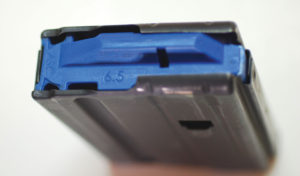
The name Grendel is from the epic Anglo-Saxon poem Beowulf (circa 700-1000 A.D.). As the story goes, the mythical monster Grendel had been ravaging the mead-hall of Herot, killing and eating anyone he finds there. The vicious Grendel is feared by all, except Beowulf, who is not about to take any grief from Grendel and sets out to destroy him. Finally, Beowulf succeeds in killing Grendel by ripping his arm off. After also killing Grendel’s mother, Beowulf finds Grendel’s corpse and removes his head as a trophy. (Whether or not the head was mounted is not known.) It is perhaps only logical that one of Bill’s other cartridges is the ponderous .50 Beowulf.
While metric calibers have never been very popular in the States, the 6.5mm caliber has had an enviable reputation as a game getter for years. The high sectional densities and modest velocities of the long-for-caliber bullets from most 6.5mm rounds result in deep penetration and reliable expansion, without bullet blow-up.
Hunting history is rife with the tales of derring-do with 6.5mm cartridges. W.D.M. Bell whacked many elephants and Werner von Alvensleben slew hundreds of buffalo with what they termed a “small-bore rifle,” namely, the 6.5×54 Mannlicher-Schönauer. African hunter John Taylor noted in his 1948 tome African Rifles and Cartridges that the 160-grain 6.5mm bullet had about the best diameter-to-weight ratio of any game bullet, although Taylor wasn’t a big fan of the 6.5 on larger African game. Today, the 6.5mm is well represented in the cartridge lineup, with the 6.5 Creedmoor, .260 Remington, 6.5-284 Norma, .264 Winchester Magnum and the brand new .26 Nosler, to name a few.
Factory ammo for the Grendel is relatively plentiful these days. Hornady offers two loads with 123-grain bullets, the A-MAX and SST. I was unable to locate the A-MAX load, but I shot the SST version. It is cataloged at 2,620 fps, clocked 2,429 fps out of the AR’s 18-inch barrel and accuracy averaged a delightful .68 MOA. Hornady’s ballistic wizard, Dave Emary, told me that this SST is specifically designed for small- to mid-sized big game, such as antelope or whitetail deer.
Alexander Arms itself lists five excellent factory loads in its catalog. Bullets are the Hornady 129-grain SST, 123-grain Lapua Scenar, Barnes’ 120-grain TS-X, the Nosler 120-grain Ballistic Tip and Swift’s 130-grain Scirocco. Although not listed in their 2013 catalog, I shot some Alexander Arms ammo loaded with the Berger 100-grain HPBT bullet. It was the fastest load tested at 2,704 fps and grouped into .68 MOA. Specs on three additional Alexander Arms loads tested are: 120-grain TS-X (2,457 fps, 1.47 MOA), 129-grain Hornady SST (2,308 fps, 1.77 MOA) and 130-grain Scirocco (2,258 fps, 1.65 MOA).
Finally, for “blasting ammo,” Wolf’s 120-grain HPBT load from (where else?) Russia, is only $15.99 a box from Alexander Arms, MidwayUSA and other sources. This ammo is brass-cased and Boxer-primed, but the brass is pretty soft and really not suitable for reloading. In the Grendel AR, it registered 2,392 fps and shot a respectable 1.07 MOA average. All of the factory load data is shown in the accompanying table.
Handloading the Grendel is where the fun starts. Most manufacturers of reloading tools make reloading dies, and Alexander Arms offers them, too. With the number of powders and high-tech bullets available, it is easy to tailor ammo for benchrest competition, long-range targets, plinking, varmints and big game.
Frankly, load development in the Grendel is mundane. About the only requirements are a primer in one end of the case, a bullet in the other and a safe powder charge in between. That’s about it. It’s downright difficult to find a load that won’t shoot like gangbusters in the Grendel. The famous PPC case shape, a good barrel, the inherent accuracy of the AR platform and today’s quality components all add up to fine performance.
The 6.5 Grendel case takes small rifle primers, and standard caps are all that are required. New cases are available from Alexander Arms, Hornady and Nosler. Alexander Arms cases are made by Lapua, and have the PPC-sized small flash hole, thought to be a component in the PPC accuracy equation.
Load data are readily available in most contemporary loading manuals, and the comprehensive two-volume set of 6.5 Grendel Reloading Handbooks by Joseph Smith, Paul Scott and Gregory Luli (see references) is a must for all 6.5 Grendel reloaders.
I tested over 40 handloads in the AR, and the average accuracy of all of them was 1.19 MOA; the best 25 percent averaged .76 MOA and for the top 50 percent, it was .87 MOA. Those results are no fluke.
The table shows just the best loads for seven bullets that demonstrate the superb accuracy of the 6.5 Grendel that the reloader can use as a starting point for a big-game load. In fact, I am going to pick one of these loads for an upcoming exotic sheep hunt in Texas.
The best powders in my tests were IMR-8208XBR, CFE-223 and Norma N-201. Bullet standouts were the Nosler Partitions and the Hornady SST. Because of the limited capacity of the Grendel case, about the heaviest bullets that are practical weigh 100 to 123 grains. These test results pretty much demonstrate why the 6.5 Grendel is firmly established as a super-accurate cartridge. With the addition of the Alexander Arms Grendel Hunter rifle, more hunters can take to the field with what may well be the optimum combination of power, portability, ballistic efficiency and pinpoint accuracy.
Alexander Arms Grendel Hunter
Type: Direct gas impingement semiautomatic AR-15
Caliber: 6.5 Grendel
Capacity: One 10-round magazine supplied, four- and 26-round magazines available
Barrel: 18-inch fluted stainless steel, six-grooves, 8-inch twist; muzzle threaded 9/16-24, thread protector provided
Overall length: 36¾ inches
Weight: 6 pounds, 9 ounces (with empty 10-round magazine); 8 pounds, 10½ ounces (with scope and mount, as tested)
Trigger: Blade-type Tactical single-stage trigger, weight of pull 5 pounds, 6 ounces, skeletonized trigger, hammer and disconnector
Sights: None. Flattop receiver standard scope/optic mounts. Leupold VX-6 4-24×52 CDS 34mm scope with T-MOA Reticle (as tested)
Scope Mount: Talley Tactical 34mm Black Armor Rings (as tested)
Finish: Matte black finish on barrel, Kryptek Highlander camo pattern on upper, lower and stock, black Ergo Grip
Handguard: Free-floated 12.5-inch, one MK10 Plus Rail section, four attachment points for additional rails
Stock: Adjustable for length of pull (12½ to 14½ inches)
MSRP: TBD
Website: alexanderarms.com

Next Step: Get your FREE Printable Target Pack
Enhance your shooting precision with our 62 MOA Targets, perfect for rifles and handguns. Crafted in collaboration with Storm Tactical for accuracy and versatility.
Subscribe to the Gun Digest email newsletter and get your downloadable target pack sent straight to your inbox. Stay updated with the latest firearms info in the industry.

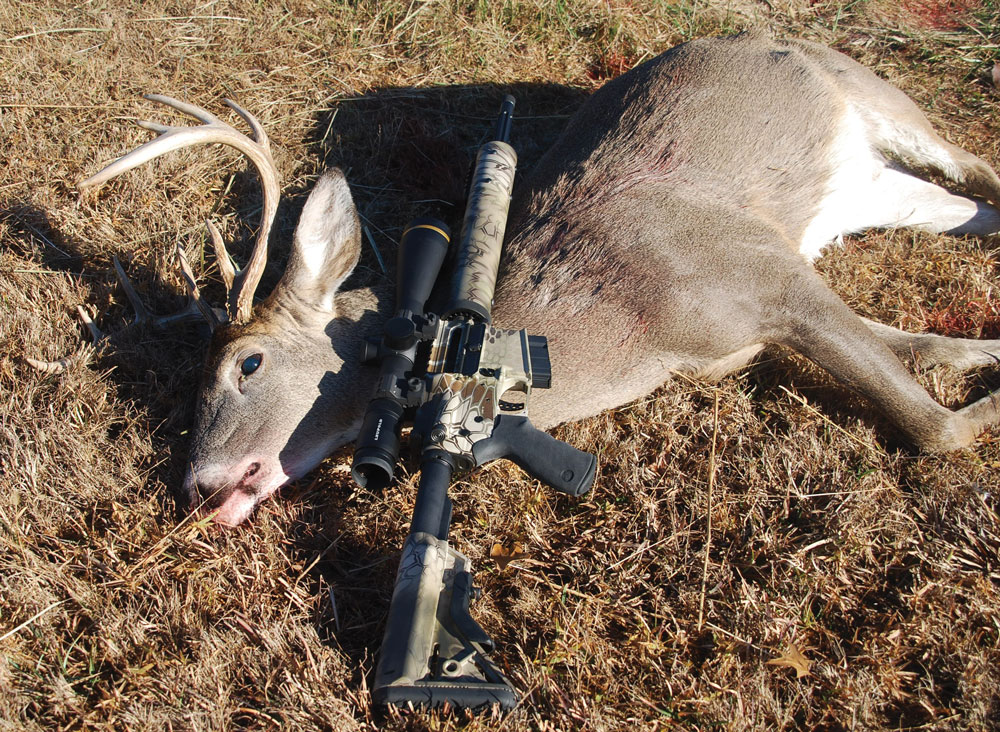
![Best Concealed Carry Guns In 2025 [Field Tested] Wilson Combat EDC X9S 1](https://gundigest.com/wp-content/uploads/Wilson-Combat-EDC-X9S-1-324x160.jpg)


![Best 9mm Carbine: Affordable PCCs [Tested] Ruger Carbine Shooting](https://gundigest.com/wp-content/uploads/Ruger-Carbine-Shooting-100x70.jpg)
![Best AR-15: Top Options Available Today [Field Tested] Harrington and Richardson PSA XM177E2 feature](https://gundigest.com/wp-content/uploads/Harrington-and-Richardson-PSA-XM177E2-feature-100x70.jpg)
